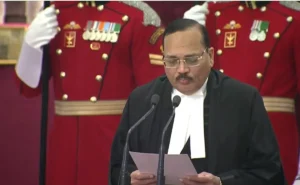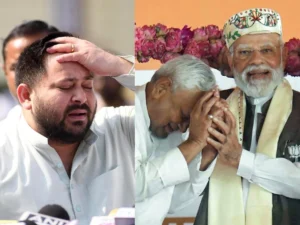Prime Minister Narendra Modi recently announced India’s ambitious plans to become a major global electric vehicle exporter. The country aims to export EVs to 100 countries worldwide within the next several years. This bold declaration marks India’s determination to capture significant market share in the rapidly growing international electric vehicle industry.
India’s Electric Vehicle Manufacturing Revolution Takes Shape
The announcement comes during a period when India’s domestic EV manufacturing capabilities are expanding rapidly across multiple states. Local manufacturers have invested billions of dollars in new production facilities and advanced battery technology development. These investments position the nation perfectly for large-scale export operations targeting international markets.
Government policies supporting electric vehicle adoption have created favorable conditions for manufacturers seeking export opportunities. Tax incentives and subsidies encourage companies to establish production bases within India rather than importing finished vehicles. The strategy reduces costs while building domestic expertise in cutting-edge automotive technologies.
Manufacturing hubs in states like Tamil Nadu, Gujarat, and Karnataka are becoming major centers for electric vehicle production. These regions offer skilled labor, robust infrastructure, and proximity to major shipping ports for international distribution. The combination creates ideal conditions for cost-effective manufacturing and efficient global supply chain operations.
Breaking Down the Global Export Strategy
India’s approach to reaching 100 countries involves targeting both developed and emerging markets with different vehicle categories. Two-wheelers and three-wheelers represent the initial focus areas where Indian manufacturers already possess significant competitive advantages. These segments offer lower entry barriers and established manufacturing expertise.
The export strategy emphasizes affordable pricing combined with reliable quality standards that meet international safety requirements. Indian manufacturers can produce electric vehicles at significantly lower costs than traditional automotive powerhouses. This cost advantage enables competitive pricing in price-sensitive markets across Asia, Africa, and Latin America.
Government trade missions and diplomatic efforts support manufacturers in identifying potential export markets and establishing distribution networks. Export promotion councils provide guidance on regulatory requirements and certification processes in target countries. These support systems reduce barriers that might otherwise prevent smaller manufacturers from pursuing international expansion.
Key Market Segments Driving Export Growth
Several vehicle categories show particular promise for India’s global EV export ambitions:
- Electric two-wheelers for urban transportation needs
- Three-wheelers for commercial and passenger services
- Small electric cars for emerging market consumers
- Electric buses for public transportation systems
- Specialized commercial vehicles for logistics operations
Two-wheelers represent India’s strongest competitive position in global markets due to established manufacturing expertise and cost advantages. Companies like Bajaj Auto and TVS Motor are already exporting electric scooters to multiple countries. Their success demonstrates the viability of India’s broader export strategy.
Three-wheeler electric vehicles offer unique advantages in developing nations where they serve as affordable commercial transportation solutions. Indian manufacturers dominate global three-wheeler production and can leverage this expertise for electric variants. The segment provides steady demand from countries seeking sustainable urban mobility solutions.
Economic Impact and Job Creation Potential
The ambitious export targets could generate hundreds of thousands of new jobs across India’s automotive supply chain ecosystem. Manufacturing facilities require skilled workers, while export operations create opportunities in logistics, quality control, and international business development. Rural areas hosting new factories particularly benefit from employment generation and economic development.
Foreign exchange earnings from EV exports could reach billions of dollars annually if India achieves its stated targets. These earnings support India’s balance of payments while reducing dependence on imported petroleum products. The strategy aligns with broader goals of energy independence and sustainable economic development.
Local component suppliers also benefit significantly from increased production volumes driven by export demand. Battery manufacturers, electric motor producers, and electronics suppliers can achieve economies of scale through larger production runs. This scaling effect reduces costs and improves competitiveness across the entire supply chain.
Challenges and Competitive Landscape Analysis
Despite ambitious targets, India faces significant challenges in achieving its 100 countries export goal within the proposed timeframe. Established automotive exporters like China already dominate many international markets with mature supply chains and proven products. Competition will be intense, particularly in price-sensitive market segments.
Quality standards and safety certifications vary significantly across different countries, creating complex compliance requirements for exporters. Meeting diverse regulatory standards while maintaining cost competitiveness requires substantial investment in testing facilities and certification processes. These requirements could slow initial market entry in some regions.
Infrastructure limitations within India may constrain the rapid scaling of export operations despite growing manufacturing capacity. Port facilities, logistics networks, and quality testing capabilities need expansion to support large-scale international shipments. Government infrastructure investments will be crucial for achieving export targets.
Technology Innovation and Research Development Focus
India’s success in global EV markets depends heavily on continuous innovation in battery technology and vehicle design optimization. Research and development investments focus on improving energy density while reducing battery costs through local manufacturing capabilities. These advances are essential for maintaining competitiveness against international rivals.
Collaboration between government research institutions and private manufacturers accelerates technology development while sharing costs across multiple stakeholders. Joint ventures with international technology partners provide access to advanced manufacturing processes and global best practices. These partnerships help bridge technology gaps more quickly than independent development efforts.
The government’s emphasis on developing indigenous battery manufacturing capabilities reduces dependence on imports while creating export opportunities. Battery technology represents a critical component where India seeks to establish global leadership through strategic investments and policy support.
Looking ahead, India’s ambitious EV export strategy represents a significant opportunity to establish leadership in the global clean transportation revolution. Success depends on continued government support, private sector innovation, and effective execution of international market development strategies.








Be First to Comment